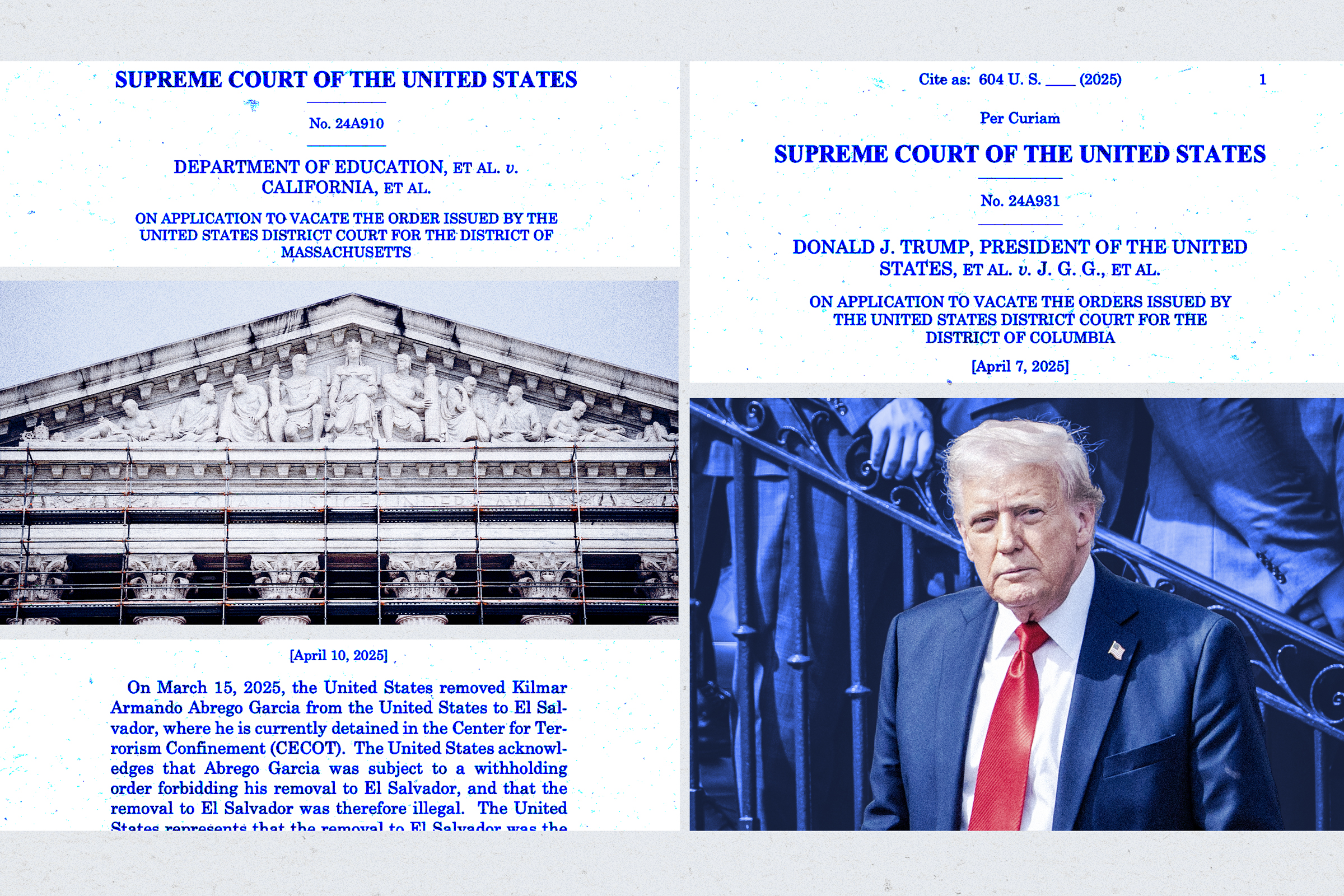Nonprofits, states, and others have launched more than 100 legal challenges against President Donald Trump’s agenda, sometimes halting his actions.
The legal battles have reached the Supreme Court on 10 occasions. Of those, the administration has won five in five cases and lost two. Three cases surrounding Trump’s birthright citizenship executive order have yet to be decided.
In all of the rulings so far, the Trump administration requested temporary halts of lower court rulings blocking certain executive actions. As such, they’ve prompted decisions by the high court that mostly offer narrow legal rulings rather than drawing firm conclusions of law, as Supreme Court cases more typically do.
“In all, the administration has been largely successful in cases reaching the Supreme Court,” Joe Luppino-Esposito, federal policy chief at Pacific Legal Foundation, a libertarian legal group, told The Epoch Times.
“There appears to be two clear trends—rejection of sweeping, overbroad lower court orders, and an affirmation of the idea of the unitary executive. Issues involving those employees or other appointees of the executive branch are particularly falling the president’s way.”
Deportations
On April 7, the Supreme Court handed Trump a win in his use of the Alien Enemies Act to deport members of the Venezuelan gang Tren de Aragua.While the court didn’t rule on the legality of Trump’s invocation of the 18th-century law, it did remove one of the lower court’s blocks on his deportations. In doing so, the high court allowed the deportations to proceed but required the Trump administration to provide notice to deportees before their removal flights.

At an Oval Office meeting on April 13, top Trump officials said it was ultimately up to El Salvador whether to return Abrego Garcia, an El Salvador citizen, to the United States.
Referring to the Supreme Court ruling, Attorney General Pam Bondi said, “If they wanted to return him, we would facilitate it, meaning provide a plane.”
Secretary of State Marco Rubio noted that foreign policy is an executive function. “No court in the United States has a right to conduct the foreign policy of the United States,” he said.
Spending
Part of Trump’s agenda has involved sweeping cuts to government spending across multiple federal agencies and departments. Legal challenges have alleged that Trump violated the Constitution’s separation of powers by redirecting funds without approval from Congress, which is in charge of appropriating funds.
One of the administration’s counterarguments has been that the lawsuits were essentially disputes over contracts with the federal government. Like the deportations case, the administration contended that the suit belonged in a different tribunal—the Court of Federal Claims, which deals with federal contract disputes.
The high court pointed to the Tucker Act, which the administration raised in court. Enacted in 1887, the law allows entities to sue the federal government where the government has waived sovereign immunity for specific types of claims, including those founded on any “express or implied contract” with the United States. These cases need to be brought before the Court of Federal Claims in Washington.

In its decision, the court didn’t offer much of an explanation but said that the payments were “owed for work already completed.”
“Does a single district-court judge who likely lacks jurisdiction have the unchecked power to compel the Government of the United States to pay out (and probably lose forever) 2 billion taxpayer dollars?” he wrote.
Federal Employees
Some of the legal pushback to the Trump agenda has come from former agency heads and labor unions—specifically over the administration’s attempts to terminate many in the federal government.At the beginning of the Trump administration, the heads of the National Labor Relations Board and Merit Systems Protection Board each received brief emails notifying them that the president had decided to fire them. They sued in response, claiming that Trump violated federal law in part by not providing a cause for removing them.

The case has led lower courts to wade into a debate over the president’s removal power, which has been addressed in historical and recent Supreme Court precedents.
Neither that order nor another involving Trump’s termination of probationary employees offered much in the way of legal reasoning. In the latter case, the Supreme Court allowed Trump to terminate some probationary employees and indicated on April 8 that nine nonprofits that brought the action hadn’t done enough to establish standing, or a right to sue.














